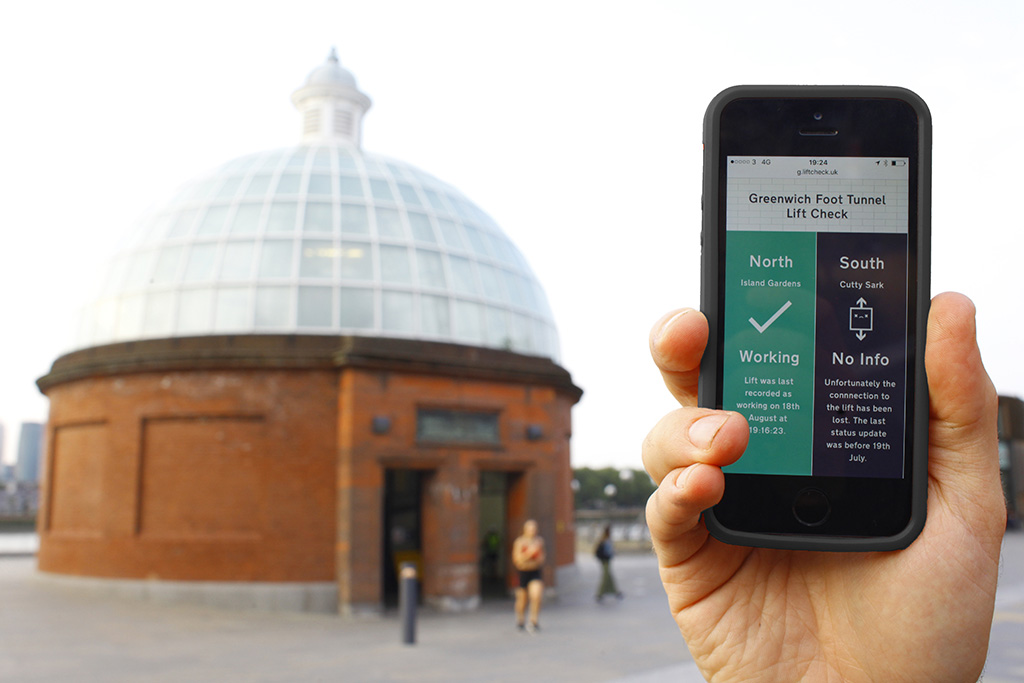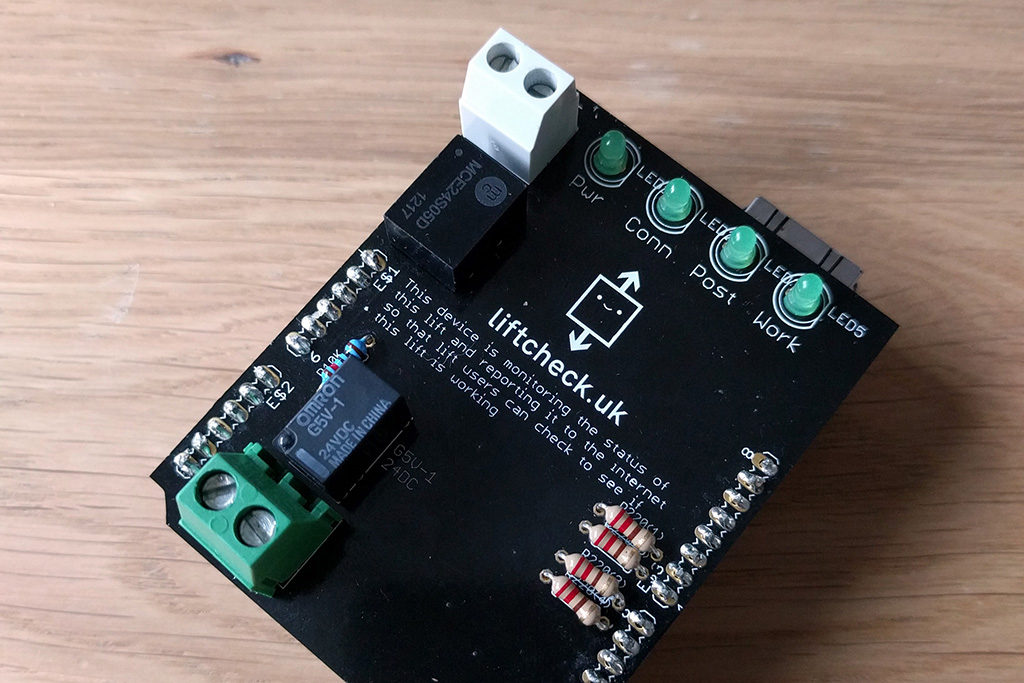
We were asked by The Royal Borough of Greenwich to create a webapp allow users of the Greenwich and Woolwich foot tunnels to check if the lifts are working before they set off.
Both over one hundred years old, the two foot tunnels provide the only river crossings for pedestrians and cyclists east of Tower Bridge. Because of this they have become essential parts of London’s active travel infrastructure. Each tunnel is served by a pair of lifts which run 24 hours a day.
Unfortunately, as they are entirely open to both the public and the elements, they sometimes go out of service. In this scenario tunnel users need to negotiate over 100 steps which renders the tunnels inaccessible for many disabled and for many cyclists is not doable carrying their bike. For these people a length detour can be required (of up to nine miles for cyclists). The LiftCheck webapps allow anyone to check the status of the lifts before they set off allowing them to plan their journey with confidence.
Greenwich Foot Tunnel LiftCheck
Woolwich Foot Tunnel LiftCheck
As with other projects we have worked on in the ‘Smart City’ space we built the system from the use case up, minimising the data collected and stored and focusing on solving the problem for the tunnel users with as simple a set-up as possible. You can read more about this approach in the Clever City Manifesto.

The system comprises monitors installed in the controller for each lift and a smartphone-optimised web application that collates the information received from the monitors and displays it in to users in a clear and simple manner. As some kinds of lift failures also cause the monitor to stop operating were keen to design the system to fail gracefully and to provide the user with an accurate mental model of the system so they can make decisions accordingly. We believe that this approach renders the system much more useful than one that could be marginally simpler but would increase the risk of providing the user with wrong or misleading information.
We are working with other organisations that maintain publicly accessible lifts to deploy LiftCheck to improve the accessibility of their infrastructure. If you operate, or use lifts, that you believe would benefit from the system please get in touch.
